The next event is a beach trip. Unfortunatley we live about as far from the beach as it is possible to do so in the UK so it takes some planning (and time) to see the sea. A few weeks ago I was in Southend and took the opportunity to go to the beach to get a shot for the project. Unfortunately I got bit carried away adding beachy things I'd found (half a dead crab anyone?) into the picture. It looked great on the camera's LCD but when I got home (hours later) and pulled it up on the PC it looked like an ad for everything that was was wrong with the British seaside. I cloned out the worst of the slimey seaweed but it was too late I did not love the image.
For the next couple of weeks I tried to get back the the beach but I didn't have the time so then I started looking for a sandpit I could use - again no luck. So I went to tesco and bought 20kg of play sand and decided to construct my own mini sandpit out of a seedtray from the greenhouse.
I wanted to hide the edges of the sandpit (seedtray) and include a nice blue sky with fluffy white clouds in the background. I set everything up in the garden but soon found a number of problems. First the sky was not in anyway blue, next it was very difficult to find a way of shooting it that didn't include the trees and shrubs from the garden (not very beachy) and finally, the last straw, it started chucking down with rain.
I went inside to sulk and watch another of the Strobist DVDs (excellent btw). After half an hour or so the rain hadn't stopped so I decided to bring the sand inside. Clearly some magic was going to be required as I has no blue sky inside either.
Here is the final result:
I didn't even have a blue wall to play with so I setup everything in front of a fairly neutral wall and gelled my background light with a CTB gel to make it blue. I then set the white balance on the camera to tungsten making the backround even bluer. The main light was gelled CTO to match the camera's white balance.
In place of clouds I projected a texture on the wall by firing a strobe through some bubble wrap. This flash was left ungelled to give it a whitey-blue temperature.
Here is the setup:
My wife helped out by holding up a white towel to provide some fill to the shadow side of the picture.
I probably should have warmed the main light a little more, with say, an extra 1/2 CTO to mimic lovely warm sunlight but as I had "2 stops of colour" between my background light and main light I was able to warm the shot by playing with the colour temperature in Light Room without losing the lovely blue background.
As you can see I didn't have to do much else to it:

It turns out that the original beach shot with the slime 'shopped out was actually selected to advertise the event but I am still very chuffed with the sand catle image and learnt a lot doing it.
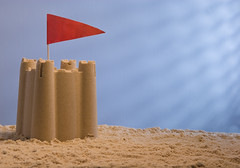

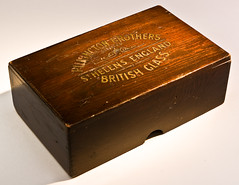






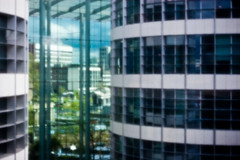
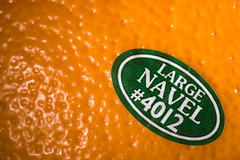

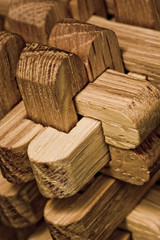







 Next I cut it out.
Next I cut it out.






 To test the ringflash I mounted it on a tripod with the camera on another tripod behind and shot a couple of self portraits. Later in the day I tried hand holding the flash and camera. I found both techniques were easy to do and got nice results.
To test the ringflash I mounted it on a tripod with the camera on another tripod behind and shot a couple of self portraits. Later in the day I tried hand holding the flash and camera. I found both techniques were easy to do and got nice results.
























